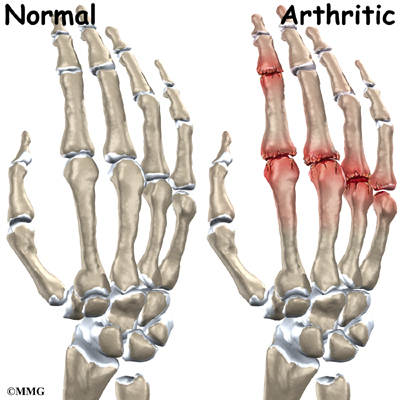
Monday, April 28, 2008
Nonunion
 Nonunion is a failure of fracture fragments to unite or heal. Nonunion usually occurs if the fracture site has failed to heal completely by approximately 6-9 months after an injury.
Nonunion is a failure of fracture fragments to unite or heal. Nonunion usually occurs if the fracture site has failed to heal completely by approximately 6-9 months after an injury. Some causes of fracture nonunion are:
Insufficient or improper immobilization
Infection
Presence of soft tissue interposed between the edges of the fractured bone
Inadequate blood supply
Poor nutritional status
Metabolic bone disease
Fractures that are open, comminuted, segmental, or pathologic
Infection
Presence of soft tissue interposed between the edges of the fractured bone
Inadequate blood supply
Poor nutritional status
Metabolic bone disease
Fractures that are open, comminuted, segmental, or pathologic
Assess for:
-Pain
-Swelling
-Tenderness
-Deformity
-Limited Mobility
Degenarative Arthritis

Degenerative arthritis or osteoarthrosis, is the most common form of arthritis. Osteoarthritis is caused by the cartilage in joints gradually wearing away with time.
Degenerative arthritis can affect any joint, the most commonly affected joints are in the hands, hips, knees and spine. It typically affects just one joint, though in some cases, such as with finger arthritis, several joints can be affected.
Degenerative arthritis is progressive and no cure exists. However, treatments can relieve pain and aid in maintaining current level of activity.
Assess for:
-Joint stiffness for longer than 15min
-Limited joint mobility
-Coarse crepitus
-Joint swelling
-Warmth and swelling to affected joint
Avascular Necrosis

Avascular necrosis is death of bone tissue due to a lack of blood supply. This can lead to tiny breaks in the bone and the bone's eventual collapse. Long-term steroid use and excessive alcohol consumption can also lead to this progressive condition. Other tems for avascular necrosis are, aseptic necrosis and ischemic bone necrosis. Managing the condition is a lifelong process.
Left: Avascular Necrosis of the humeral head. Right: Cross section showing marrow replacement and bone necrosis of the femur
Assess for:
-Joint pain when weight bearing and when at rest
-Limited joint mobility
-Pain with walking, standing, and lifting
-Joint stiffness w/ limited ROM
-Muscle spasms
Dislocation

Dislocated ankle.
Joint dislocation occurs when bones in a joint become displaced or misaligned. It is often caused by a sudden impact to the joint. The ligaments always become damaged as a result of a dislocation. A subluxation is a partial dislocation.
Joint dislocation occurs when bones in a joint become displaced or misaligned. It is often caused by a sudden impact to the joint. The ligaments always become damaged as a result of a dislocation. A subluxation is a partial dislocation.
Assess for:
-discoloration
-visibly out of place bone
-limited movement
-swelling and bruising
-intense pain when weight is beared on limb
-visibly out of place bone
-limited movement
-swelling and bruising
-intense pain when weight is beared on limb
Subscribe to:
Posts (Atom)